Recent Articles
Popular Makes
Body Types
2017 Subaru Outback Road Test and Review
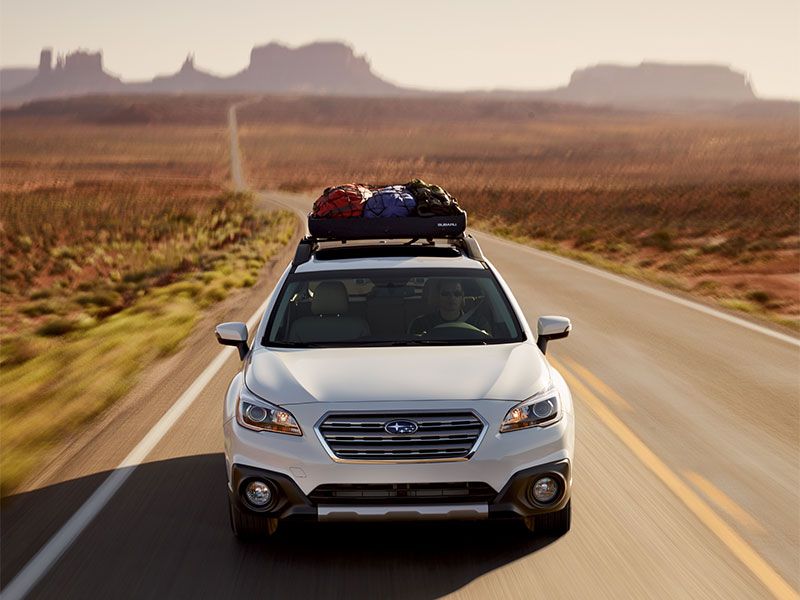
2016 Subaru Outback 2.5i Limited exterior front view
Travel to New England or the Pacific Northwest, and you’ll see roads teeming with Subarus, particularly the Outback. It seems ironic that the Outback, developed by Subaru as a stop-gap for the SUV it didn’t have, is now the car of choice for people who don’t want an SUV, but who need the space and bad-weather traction that SUVs provide. If you have the same aversion to SUVs—or even if you don’t—you’ll find the Outback to be roomy, reliable, and capable. Want to learn more about this versatile and much-beloved AWD wagon? You'll find it in this Autobytel road test and review of the 2017 Subaru Outback.
The SUV That Never Was An SUV
Subaru first introduced the Outback in 1995. Buyers in the US were snapping up SUVs like the Jeep Cherokee and Ford Explorer like crazy, and Subaru didn’t have anything even remotely truck-like to sell them. But all-wheel drive was the Japanese brand’s specialty, and Subaru did have an AWD wagon called the Legacy already in the showroom. Subaru lifted the suspension, tacked on some contrasting-color body cladding, and, presto, the Subaru Legacy Outback was born. What was supposed to be a stopgap has since turned into an institution: 2017 will mark the Outback’s 22nd year of production, and while the original Legacy wagon is gone—Subaru discontinued it for the US market in 2009—the Outback continues to be a strong seller, especially in places where Mother Nature exhibits her fury.
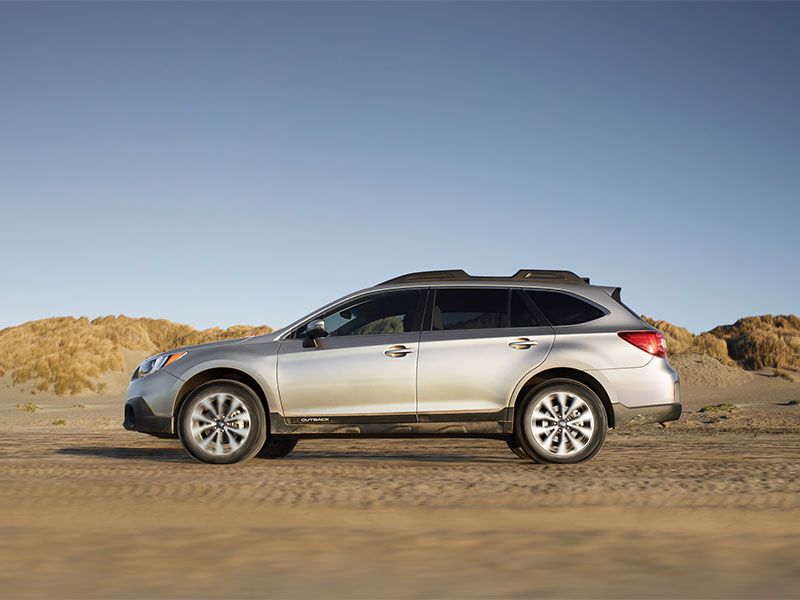
Photo by Subaru
A More Civilized Outback
Subaru last redesigned the Outback in 2015, with an eye toward making the car appeal more to mainstream buyers. Like Saab, the now-defunct Swedish automaker, Subaru has always had a penchant for doing things its own way, and that included interiors that were often described as “quirky” by fans (and “cheap” and “strange” by those unfamiliar with the brand). Subaru engineers weaned themselves from their addiction to chintzy plastics, rearranged the controls into a more sensible layout, and upgraded the infotainment system. Brand loyalists might lament the loss of individuality, but how can anyone complain about an interior that now reflects the price tag on the car? The latest Subaru Outback cabin has everything we at Autobytel like to see: nice materials, restrained use of trim, a sensible control layout, and plenty of storage space. The design is a bit dull, but the seats are comfortable and the Outback’s big windows provide excellent outward vision in all directions.
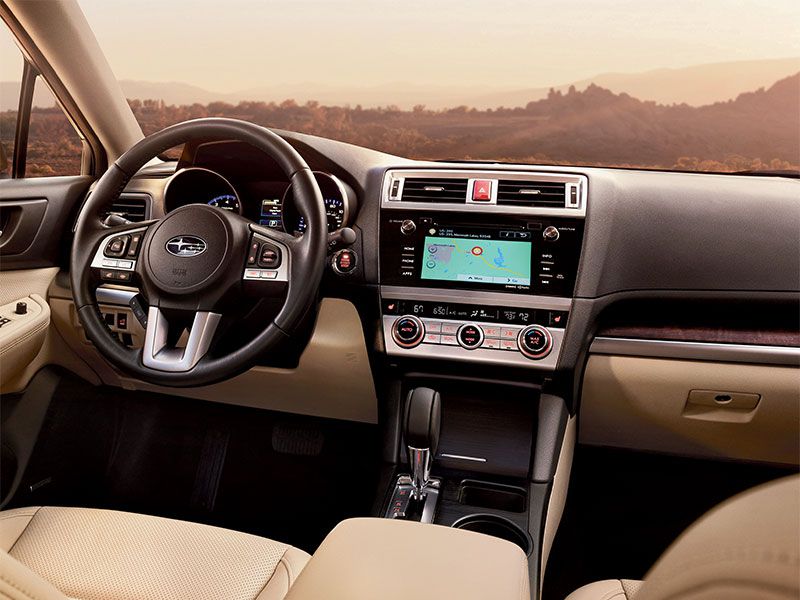
Horizontal Cargo Advantage
Speaking of storage space, this is one area where the 2017 Subaru Outback excels. SUVs tend to be tall and stubby, while the Outback is more low and long, and while its cargo bay offers a similar measurement to many midsize suvs (35.5 cubic feet), the horizontal orientation is, we think, more useful. (You can only stack cargo so high; anything that goes over the top of the seats poses a danger to passengers in a crash.) One of our favorite bits of standard equipment in this all-wheel-drive wagon is the cargo tray, a big, rubbery-plastic affair with a large lip that lets you pile in snowy, muddy, wet stuff without fear of ruining the carpets. Pull the tray out, hose it off, let it dry, and you’re back in business. As with most SUVs, the Outback’s rear seats fold down to open up 73.3 cubic feet of space, though the seatback doesn’t fold down perfectly flat.
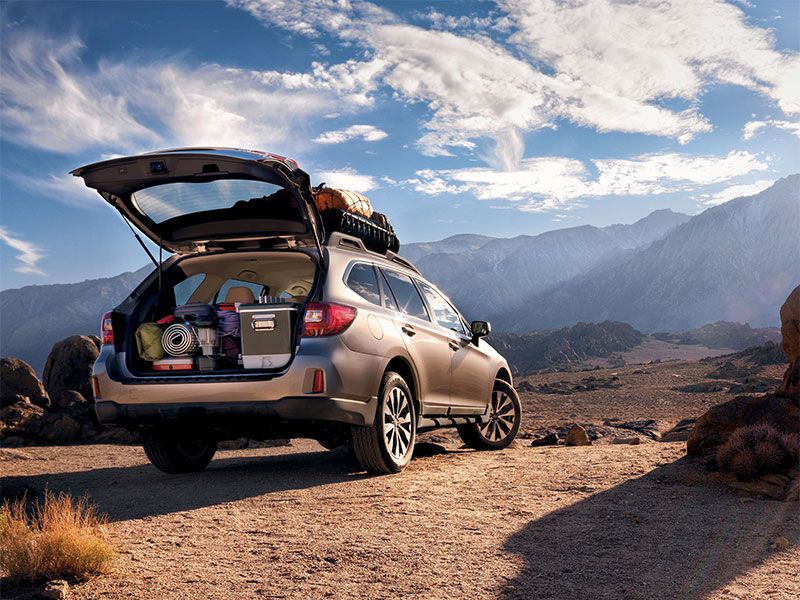
Photo by Subaru
Unusual Engines
Under the hood, Subaru's 2017 Outback employs either a 2.5-liter 4-cylinder or or a 3.6-liter 6-cylinder engine. Both are horizontally opposed (“flat” or “boxer”) engines, which are rare birds, though Subaru and Porsche swear by them (as did Volkswagen back in the days of the original Beetle). Among their advantages is that they keep the heaviest bits mounted low in the car, lowering the center of gravity. Also, their chugging sound gives them a unique feel, its been hushed a bit in this latest Outback. The 4-cylinder engine, found in 2.5i models, produces 175 horsepower, which makes for adequate, if not stunning, acceleration. EPA fuel economy estimates are 25 MPG city, 32 MPG highway, and 28 MPG combined. With 256 horsepower on tap, the 6-cylinder engine offers a lot more oomph, though there’s a stiff fuel economy penalty: 20 MPG in town, 27 MPG on the highway, 22 MPG combined. The flat-6 is offered only in the top-of-the-range Limited and Touring models.
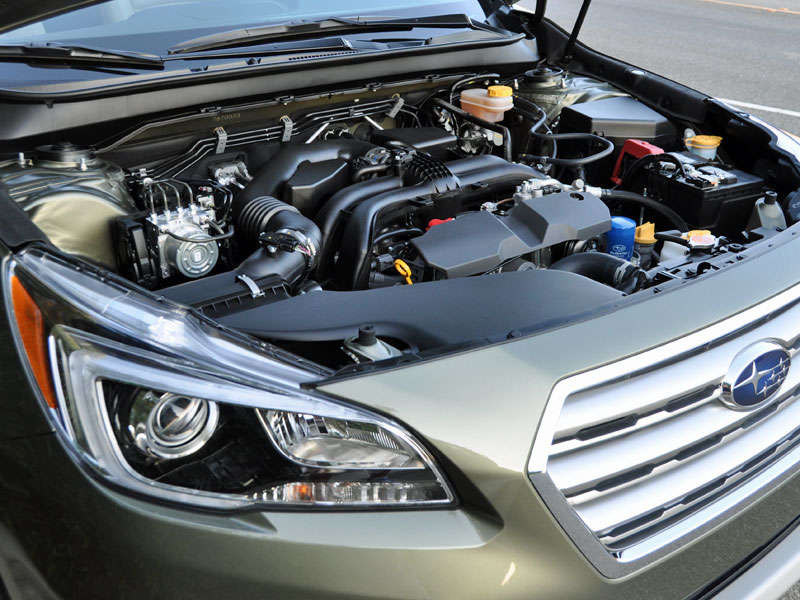
Photo by Christian Wardlaw
Controversial Transmissions
All Subaru Outbacks use a continuously variable automatic transmission, otherwise known as a CVT. These transmissions don’t use gears; instead, a steel belt (or chain) is strung between two pulleys that can change diameter, allowing infinite ratios and engine speed to rise and fall as needed. This gives the Outback a smooth, shift-free driving experience, though the lack of snappy gearshifts (especially when flooring the accelerator to call up some passing power) can be a bit disconcerting for the uninitiated. Although some of our Autobytel critics disagree, many folks like CVTs for their smooth power delivery. Engines have certain speeds at which they develop their best power and best efficiency; a CVT allows the engine to hit those speeds regardless of how fast the car is moving, something a geared transmission can’t do. Among the advantages of a CVT are excellent hillclimbing ability and good fuel economy.
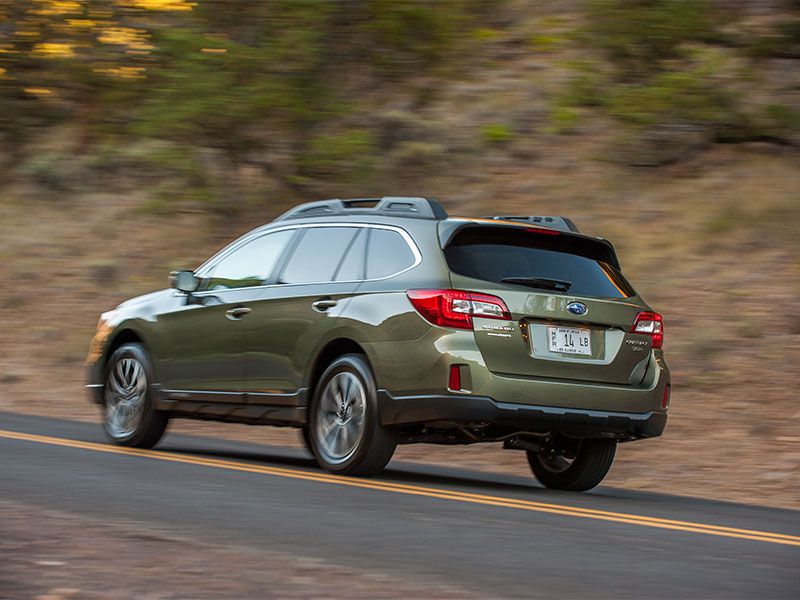
Photo by Subaru
The Beauty Of All-Wheel Drive
All 2017 Subaru Outbacks feature a sophisticated all-wheel-drive system, which delivers power to all four wheels and can move power away from wheels that slip and transfer it to those with grip. Subaru used to be the all-wheel-drive specialist, but the rise in popularity of SUVs means that more and more automakers are developing their expertise. And in this review of the 2017 Outback, we’ve found that this Subaru doesn’t distribute power quite as quickly (or as proactively) as some of its rivals. Still, we’re impressed with the way the Outback grips the road in rain and snow. Even more of a surprise is the Outback's off-road performance: Although this AWD Subaru wagon/SUV may not look very burly, most of its mechanical bits are tucked up under the bodywork (as opposed to pickups and some SUVs, which have them dangling down). As such, the 2017 Outback offers an impressive 8.7 inches of ground clearance, more than many SUVs. We’ve had the opportunity to do some pretty serious off-roading in an Outback, and we were surprised and impressed with the rugged terrain it could tackle—not at all what you’d expect from a high-riding station wagon.
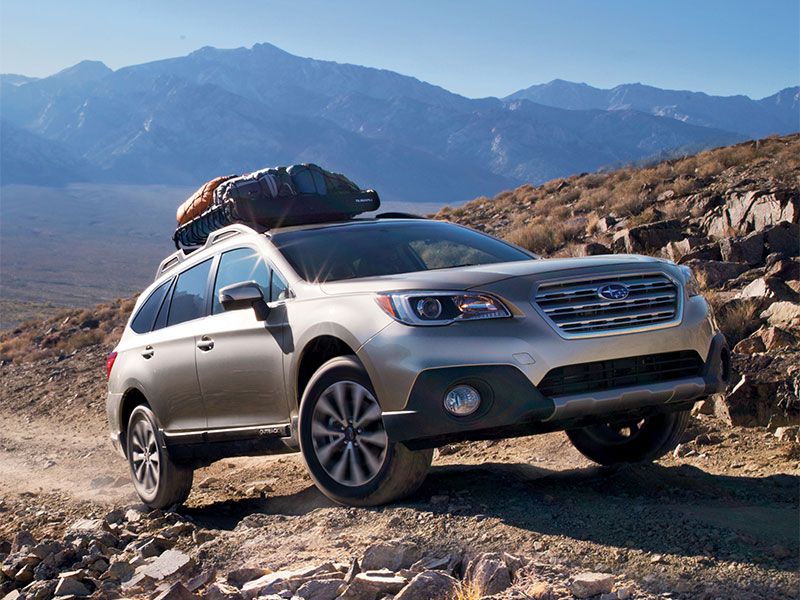
Photo by Subaru
More Fun Than You Might Expect
The Subary Outback is good on plain ol' pavement as well. We’ve already praised the outward vision and the comfortable seats of this wagon-based SUV, and we were equally impressed by the quietness of the Outback’s cabin. This Subaru is also a great-handling vehicle: While many people think of all-wheel drive as a foul-weather friend, it also pays major dividends on dry pavement. The 2017 Outback’s steering is a little on the heavy side, but the Subaru dives into turns sharply. Grip is admirable, and if you’re the type who really likes to hot-foot your way down a curvy road, you can have a lot of fun in the Outback.
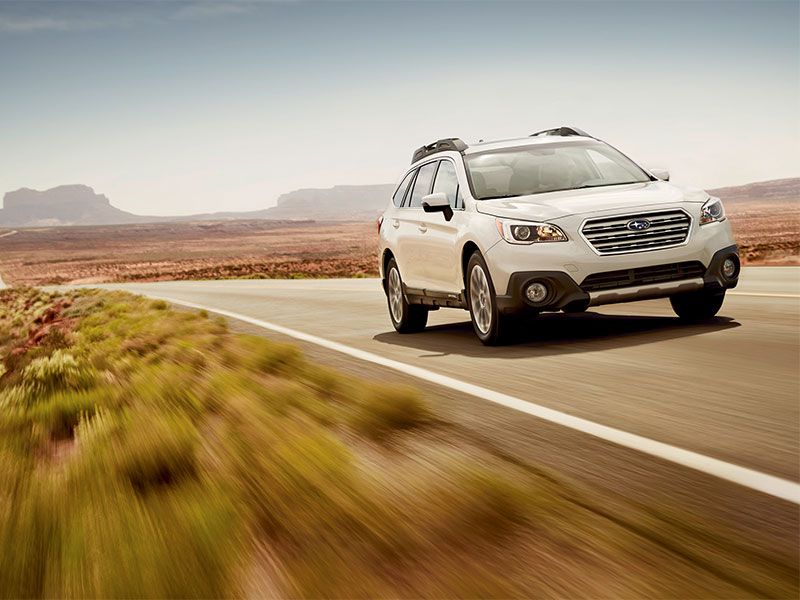
Photo by Subaru
The Subaru That's Strong On Safety
When it comes to safety, the 2017 Subaru Outback is a strong performer: This Subaru has a perfect five-star safety rating from the US government, while it earned the best-possible “Good” rating in all five of the Insurance Institute for Highway Safety’s crash tests, including the difficult small-overlap crash test. The IIHS named the Outback a “Top Safety Pick Plus.” The Plus part of that award requires a suite of active crash-prevention equipment, and the Outback has it: Subaru calls the package Subaru EyeSight (it’s based on cameras rather than sonar or radar), and it includes collision warning and mitigation with automatic braking, lane-departure warning and correction, blind-spot monitoring with rear cross-traffic alert, automatic high beams, and (for reasons we don’t quite understand) a power-operated liftgate. As with most of these systems, EyeSight includes adaptive cruise control, which automatically slows down to match the speed of cars ahead. One complaint: Subaru’s system beeps every time a car in front comes into (or goes out of) the system’s range. There’s no need for an auditory alert each time this happens, and besides, like most cars, the Outback has an indicator on the display. The constant beeping is more annoying than it is informative.
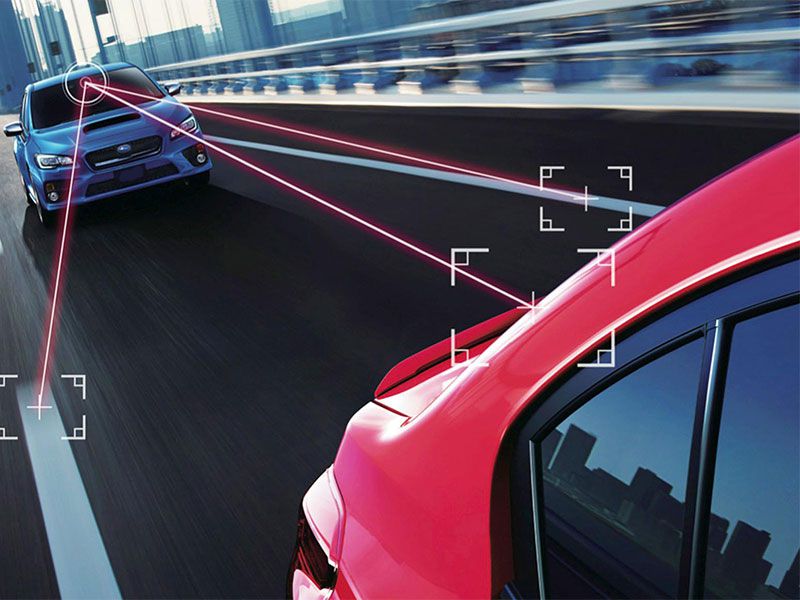
Photo by Subaru
Choices, Choices, Choices
The Subaru Outback is available in base ($26,520 including destination fee), Premium ($28,570), and Limited ($33,265) models; all three come with the 2.5i 4-cylinder engine, while the Limited can also be had with the 3.6-liter flat-6. For 2017, Subaru is upping the ante with a new top-of-the-line Touring model, priced at $36,870, which features unique trim and wheels, available brown pearlcoat paint, and a “Java brown” leather interior with contrasting stitching and unique wood trim. The Touring comes with Subaru’s EyeSight safety system as standard, and, as with the Limited model, Subaru is offering it with both the 4- and 6-cylinder engines. This is a move that we at Autobytel applaud—some automakers still insist on pairing their top-of-the-line models with their most thirsty engines, and we’re glad that luxury seekers have the option of the less powerful but more fuel-efficient engine. The Touring has no factory options except the 6-cylinder engine, which brings the price up to $39,070.
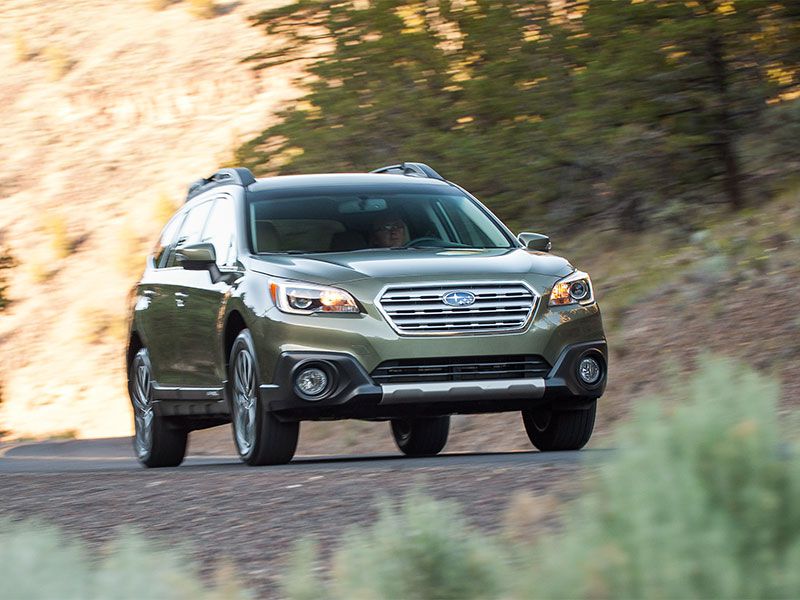
Photo by Subaru
Outback: The SUV for Those Who Don't Want an SUV
As with most good ideas, the Subaru Outback is not without competition: Audi has permanently Outback-ized its A4 wagon, the Allroad Quattro, while Volvo offers the Cross Country treatment to the smaller V60 and bigger V70. These are luxury cars and are priced accordingly; the new Outback delivers better value for money, and its quality and durability make it an excellent long-term buy. There are plenty of competitors in the SUV and crossover segment, but it’s the differentiation from these ubiquitous vehicles that gives the Outback its appeal. And if the Outback isn’t quite to your taste, remember that Subaru also offers the smaller Crosstrek (based on the compact Impreza hatchback) and the boxier Forester. Their mechanical bits are similar to those of the Outback, and we like them for all of the same reasons. Although Subarus are favored in places where the weather is snowy and wet, we think the Outback is a great vehicle for people who want the space, utility, and secure all-weather traction of an SUV—but without having an actual SUV.
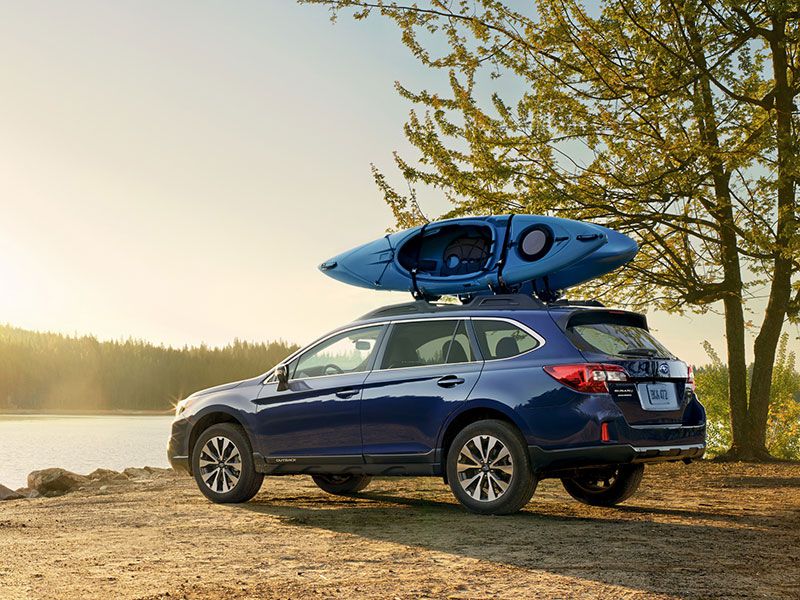
Photo by Subaru